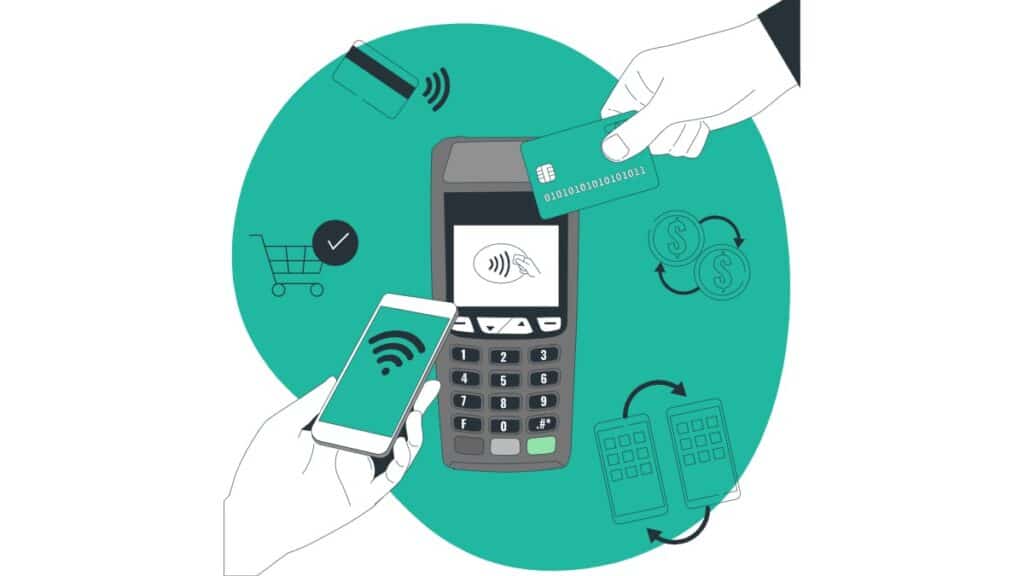Understanding the intricacies of push and pull payments is akin to navigating through a labyrinth of financial transactions. In one scenario, a user actively initiates the payment, resembling a chess move where a player pushes a pawn forward. On the flip side, the recipient pulls funds from the payer’s account, akin to strategically capturing an opponent’s piece.
In this insightful discourse, we delve deep into the nuances of push versus pull payments, elucidating their differences, merits, demerits, and practical applications.
Quick Overview: Decoding Push and Pull Payments
In essence, push payments entail an active transfer of funds by the payer such as a payout, whereas pull payments entail the collection of funds from an authorized source such as a direct debit.
Consider these examples for better clarity:
Push Payment Scenarios:
Imagine you’re at a local farmer’s market purchasing fresh produce. As you approach the vendor, you swipe your mobile wallet to complete the transaction. This seamless exchange exemplifies a push payment, where you, the payer, initiate the transfer of funds.
Alternatively, envision receiving a payment from a marketplace such as Uber or GoPuff directly into your bank account. This automated deposit represents another instance of a push payment, where funds are directly transferred to you by Uber without any action required on your part. They might be utilizing a payout provider such as borderless.
Pull Payment Instances:
Now, picture subscribing to a monthly magazine. Instead of actively making payments each month, the publication automatically deducts the subscription fee from your account. This hassle-free arrangement exemplifies a pull payment, where the payee initiates the transaction to collect funds from your authorized source.
Similarly, when you set up direct debit for your invoices, the service provider automatically withdraws the amount due from your account on the specified date. This automated collection process streamlines payments and ensures timely bill settlements. borderless is one of many providers who can help with such transfers on a B2B level and globally.
Now, let’s delve deeper into each category.
Understanding Push Payments
Push payments empower the payer to initiate and authorize the transfer of funds, providing greater control and flexibility over financial transactions.
Consider the scenario where a customer purchases a concert ticket online using their credit card. By entering their payment details and confirming the transaction, the customer triggers a push payment, directing funds from their account to the ticket seller.
The Push Payment Process
Now let’s look at a more secure form of transaction: a B2C payment on rendering services. Here are the stages of that push payment.
- The merchant captures the recipient bank account information through the payment service provider.
- The merchant then authorizes the payment through the payment service provider.
- The payment processor passes the transaction request to the bank or card scheme of the recipient’s debit card (such as Visa, Mastercard or Diners Club).
- The payment is sent in real-time. The processor relays the message back to the merchant that the payment has been completed.
Push payments are facilitated through various channels, including online payment gateways, mobile banking apps, and digital wallets. Whether it’s a one-time purchase or a recurring payment, push payments offer convenience and security for both consumers and merchants.
Advantages of Push Payments
- Enhanced Security: With push payments, customers actively authorize transactions, reducing the risk of unauthorized charges and fraudulent activities.
- Instant Transaction Processing: Push payments enable real-time fund transfers, allowing recipients to receive payment immediately upon authorization.
- Flexible Payment Options: From credit cards to mobile payment apps, push payments offer a wide range of payment methods to accommodate diverse customer preferences.
Drawbacks of Push Payments
- Transaction Fees: Some payment processors may charge fees for processing push payments, impacting merchants’ bottom line.
Pro Tip: Look for flat fee processors such as borderless instead of a percentage model to save money. - Limited Recurring Payment Options: While push payments are suitable for one-time transactions, setting up recurring payments may require additional authorization steps, leading to potential customer inconvenience.
Pro Tip: Look for processors who have API configurations and ability to automate payments such as borderless.
Unveiling Pull Payments
Pull payments, on the other hand, involve the payee initiating the transaction to collect funds from the payer’s authorized source, offering a convenient and automated payment solution for recurring transactions.
Imagine subscribing to a monthly streaming service where the subscription fee is automatically deducted from your account each month. This seamless payment process exemplifies a pull payment, where the service provider initiates the transaction to collect funds from your designated account.
The Pull Payment Mechanism
Pull payments streamline recurring transactions by automating the payment collection process, eliminating the need for manual intervention or authorization from the payer.
The exact structure of a pull payment will depend on the specific method chosen. For the sake of simplicity, we will describe the steps of a Direct Debit mandate via ACH in the US. Using the centralized clearing facility in this way is standard practice for taking regular (or one-off) payments from a client.
- The business presents a contract (known as a mandate) to the buyer, which sets out the payment terms.
- The buyer signs the contract, and provides their account information.
- The merchant submits the Direct Debit mandate to their payment services provider (PSP), with details of transaction amount(s) and frequency.
- PSP submits the mandate to the Originating Depository Financial Institution (ODFI) if they are separate entities.
- The ODFI contacts the ACH network to initiate the transaction.
- The ACH makes the payment request from the Receiving Depository Financial Institution (RDFI), that is, the payer’s bank.
- The RDFI authorizes the payment, and credits the merchant’s account.
All this can be automated in a few simple clicks with the right provider such as borderless. Ask your provider on the setup process.
Benefits of Pull Payments
- Convenience: Pull payments simplify recurring transactions, allowing customers to set up automatic payments for subscriptions, memberships, and utility bills.
- Predictable Cash Flow: For businesses, pull payments ensure a steady stream of revenue by automatically collecting payments at regular intervals.
- Reduced Administrative Burden: By automating payment collections, businesses can save time and resources spent on manual invoicing and payment processing.
Drawbacks of Pull Payments
- Risk of Payment Failures: Pull payments rely on the payer’s account having sufficient funds to cover the transaction, posing a risk of payment failures in case of insufficient funds or account closures.
- Delays in Payments: Funds may take several working days to land in the merchant’s account (because ACH Direct Debit is a delayed notification transaction type). You may be able to access same-day ACH payment processing, depending on your bank. However, this comes with additional fees and is not available for international transactions.
- Limited B2B Transactions: For high value B2B transfers, limits might be an issue and this can be costly if payment method is set as cards. Look for the processor fees and limits on high amounts.
- Limited Cross-border Reach: Direct debits are not cross-border if set via bank accounts. Look for providers who can initiate pull payments via international direct debit such as borderless.
Choosing Between Push and Pull Payments
When determining the most suitable payment method for your business, consider factors such as transaction volume, customer preferences, and industry regulations. While push payments are ideal for one-time purchases and immediate payment processing, pull payments offer a seamless solution for recurring transactions and automated payment collections.
By understanding the nuances of push and pull payments, businesses can optimize their payment strategies to enhance customer experience, streamline operations, and drive financial growth.
Unlocking Payment Efficiency with borderless
Explore the possibilities of seamless global transactions with borderless, a leading global payout platform offering secure and efficient cross-border payment solutions. borderless also offers international direct debit between countries for large B2B transactions. Empower your business with borderless and embark on a journey towards enhanced payment efficiency and financial success.
Ready to automate your push payments and payouts? Explore the borderless advantage today.
Book A Demo Today
About Us
borderless, a global payments company that provides a payout software and API to companies to process payments to 120+ countries. borderless specializes in cross-border payments, and their platform utilizes local payment rails, real-time payment rails, and SWIFT to facilitate faster and more efficient payments. We invite you to explore how borderless can assist your marketplace or digital platform in navigating marketplace payments and international payments. To learn more, contact our team to schedule a demo today.
#PushPayments #PullPayments #GlobalPayouts #PaymentInnovation #getborderless




